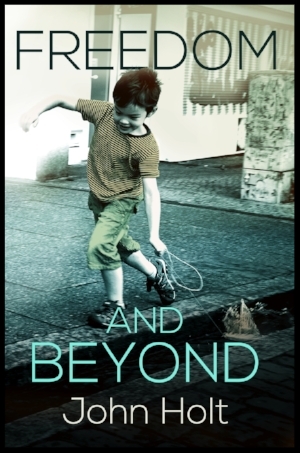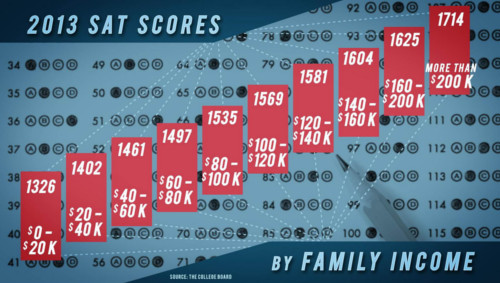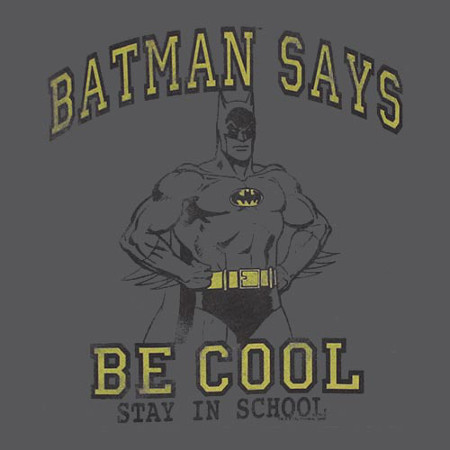Why do I think Freedom and Beyond, written in 1972, speaks to the condition of schooling, children, and adults in 2017? Because then, as now, our society was at an inflection point with a political bias pushing unbridled growth instead of a thoughtful implementation of assets winning the day. Then the country was torn over the Vietnam War, issues regarding the civil rights of minorities, women, and children were debated widely, income inequality was visibly growing, and voter unrest was palpable. At the same time, the rise of computer and communications technologies enabled corporations to influence academia and politics to push forward with plans for more economic growth, though there were many thinkers, from a variety of disciplines, who questioned the wisdom and consequences of assuming never-ending growth. However, the systems thinkers triumphed with their argument that any problems we encountered as we grew our economy would be solved by human ingenuity and by the abundance of the elites’ wealth that would trickle down to the masses. The growth freaks, as John Holt called them in Freedom and Beyond, won the day then and I hope, in 2017, that we may engage in this debate again and arrive at a different solution.
Now that the policies and institutions established in the name of unending growth are slamming against limits — limits to what people can afford monetarily, tolerate socially, and expect as basic protections and services by and from their institutions — I am struck by how much wisdom there is in the works of those who envisioned this outcome and mapped a different path for us to take years ago. I’m thinking of authors like Rachel Carlson, E.F. Shumaker, and C. Wright Mills, who warned that bigger corporations and government institutions are not always better for society and that as they grow in size and control, institutional concerns tend to become more important than individuals’ rights. In the case of education, critics like Jacques Ellul, Paul Goodman, and Ivan Illich warned how the technology of mass schooling dehumanizes us. They were dismissed as Luddites though they were arguing, as some still do, for a more skeptical attitude towards technology, not the destruction or absence of it. For them, technology, like grades in school, when applied to human experience creates a diminishment of the whole person. To fit into the system, the analog features that can’t equate digitally must be ignored for the system to function best.
One of the lesser-known writers from this time, but a favorite of mine, is Joel H. Spring. This is from some of the final paragraphs of his book, Education and the Rise of the Corporate State (Beacon Press, 1972) that I think eerily foreshadows where we have arrived today in school and society.

“Faith in the traditional values of technology has continued through the twentieth century. By traditional is meant a non-McLuhanese concept of technology. Fromm’s and Ellul’s pessimism is not shared by the systems-analysis and computer-oriented educators. The new phenomenon is that of the computer’s determining the model that will be used and that model’s being applied to social organizations and individuals. This approach is considered good because like previous developments it is believed to promise a more efficient and productively rewarding system. The computer now provides the model because all data have to be arranged so that they can be handled by the computer mechanism. This is one of the revolutionary facts of the second industrial revolution. Because the computer is so rapid and efficient, all aspects of technology are made to fit it. This means that they have to be organized in certain limited ways to be utilized by the computer. Therefore to gain the benefits of the computer, the computer’s pattern has to be used to organize experience. In other words, the functioning pattern of the computer proves the new organizational model.
“The model borrowed from the computer, and one that horrifies Fromm and Ellul, is the systems analysis approach. This method, choosing from models, organizes descriptive data into flow charts so that predictions and recommendations can be made from the original set of data. In a sense it is a streamlined form of scientific management. Applied to education it results in the same type of organization hoped for by previous educators. A predictive chart is constructed to show how the child can flow smoothly through the schools with his interests and aptitudes matched to appropriate courses that will lead to an appropriate job.”
Certainly computers have come a long way since 1972, but Spring’s point remains valid: We judge and organize our experience of life’s tasks to fit the way computer technology makes us interact with it. Autocorrect and voice command gaffes are recent examples of some undesirable technological issues for users until you train yourself to work within the devices’ parameters and then you can flow with the system — and this is true of schooling, too.

What these writers were warning about has happened in education and, as Holt notes often in Freedom and Beyond, throughout society. Will we ever acknowledge that it is time to adjust our assumptions about school or will we continue to act, using technological fixes based on the assumptions and practices of schooling laid down in the nineteenth century, that putting a new interface on schooling fixes all its underlying problems?
In Freedom and Beyond John Holt notes how we must accept that there are limits to how expansive social and government institutions can grow (you can easily see how their costs have skyrocketed in the U.S. since 1972 from Holt’s examples of school and college costs in the book), as well as acknowledge that times change and that we should change our institutions to suit the times. In Freedom and Beyond Holt seriously questions the larger question of schools and schooling itself and writes, “Can they do all the things we ask them to do? Are they the best means of doing it? What might be other or better ways?”
In the final chapters, Holt outlines a clear rationale for why and how we can live and learn without school’s costly, bureaucratic, credentialing and student-tracking systems and strongly foreshadows his support for homeschooling (Holt later founded Growing Without Schooling magazine in 1977).
This book is Holt’s most political and it certainly doesn’t fit into any traditional liberal/conservative debate about the role of schooling in modern society. This book also provides a good way for people to see that Holt was not just criticizing school techniques, but also the overall purpose of schooling.
Another important argument Holt makes in this book is that schools and more education cannot eliminate poverty and that we need to focus on providing direct help to families and communities in need and focus public education resources more broadly, not just on school lessons for their children. For instance, creating social conditions that permit a healthy, secure family life will also increase a child’s ability to learn in school and out, as well as directly benefit other family members, too. Holt’s point that education does not reduce poverty has been borne out by many studies since 1972, particularly ones that show how social conditions (zip code, family affluence) best determine educational achievement, not how their local public school performs on national and state tests.

Since university degrees really don’t have direct relevance to most jobs today (after all, colleges don’t create jobs; graduates must find jobs), and automation is reducing the number of people needed in the labor market, Holt suggests a basic income for each citizen.
“In a time of scarcity people quite rightly called idleness a curse. The curse of our time, perhaps soon a fatal one, is not idleness, but work not worth doing, done by people who hate it, who do it only because they fear that if they do not they will have no “job,” no livelihood, and worse than that, no sense of being useful or needed or worthy. We used to try to make people afraid and ashamed not to work. Now we not only do not need such people, we cannot afford them. In their frantic need to keep busy, to promote more and more useless growth, they will destroy the earth. In their need to protect their own livelihoods, they will block at every possible turn all our efforts to make our economy more efficient, less wasteful, less destructive — that is, truly economical and conservative.
“It would be the most hard-headed political and economic realism for us to guarantee and provide to every American, man, woman, or child, an income on which he can live decently and comfortably, whether he has a “job” or not. He can then do whatever work he does, not out of fear of want, but because it interests him and seems worth doing. The much discussed, so-called Negative Income Tax might well be an easy and sensible way to do this. Then we can begin to open up all these corporate, professional, institutional, and occupational monopolies that make people’s lives so difficult and expensive, and so much out of their control. We can at the same time work on another fundamental and urgent economic task. As I have said, it clearly won’t help people much to raise their incomes if even then they can’t buy the things they need, or if the cost of everything they buy goes up faster than their income. How can we make, more efficiently, at less cost to the environment, more durably, less expensively, the goods and services that people really need? How might we redefine some of these needs so as to make it possible to meet them at less expense? More important yet, how can we make it more and more possible for people to make themselves many of the things they need?”
So many of the social issues raised in this book are still hounding us today, and Holt’s proposals for other ways to handle them provides new perspectives for us. But the first and most personal issue raised in the book is the most relevant: Does freedom in education work?
Holt analyzes this issue in a lucid fashion for anyone who works with children. He first explores the structure and uses of freedom in our lives, then he divides it further into issues of authority, choice, and discipline (the chapter on discipline has often been used in writing textbooks as an example of classification and division for making an argument). Schools, learning centers, and homeschooling

But the book covers more ground than that; Holt moves from “Does freedom in education work?” to “Does schooling work to lessen inequality?” Susannah Sheffer wrote in her 1995 foreword to Freedom and Beyond: “With some exceptions, people in the mid 1990s still cling to the notion that schooling and school credentials are what will make a difference to poor kids. “Stay in school,” proclaim the ads, the messages, the speeches to young people whose experiences and gut feelings are telling them something else. Holt offers another perspective, and it is a perspective we need to consider.”
I hope this new edition of Freedom and Beyond gives you a jolt of new possibilities for living and learning with children and for remaking schooling into a more humane endeavor. Here is one last thought on that topic from the book.
“The school’s have another important mission, task, function. Edgar Friedenberg has often called it ‘social role selection.’
. . . Whatever we call it, it is the business of turning people into commodities, and deciding who goes where in our society and who gets what — who gets the best-paying jobs and most interesting careers, who gets middle-paying jobs, who gets low-paying jobs, who gets no jobs at all. Every society has one mechanism or another for deciding such questions. I am not objecting here to the existence of such mechanisms. I do object, and very strongly, to their being in schools. Until quite recently they were not. As Paul Goodman has often pointed out, at the turn of the century only about six percent of the young people in this country finished high school and less than one percent went to college. Most people, including many who were in many ways prominent and successful, were what we would call dropouts. People may often have had to decide which of a number of applicants they would employ or promote, but they did not decide on the basis of diplomas and school transcripts, because there were none. People’s school records did not follow them all through life. But now these choices, decisions are made largely on the basis of information supplied by schools.“For many reasons, this is
bad. . . . Almost nothing in experience supports the widely held idea that by looking at what a person has done in school we can tell what he will be able to do outside of school.”
If you enjoyed this article and feel called to give back to ASDE, here are ways you can support our work:
- Donate money
- Share our content with others! Click one of the buttons above to easily share on Twitter, Facebook, or email.
- Consider becoming a Contributor for Tipping Points
Tipping Points Magazine amplifies the diverse voices within the Self-Directed Education movement. The views expressed in our content belong solely to the author(s). The Alliance for Self-Directed Education disclaims responsibility for any interpretation or application of the information provided. Engage in dialogue by reaching out to the author(s) directly.






